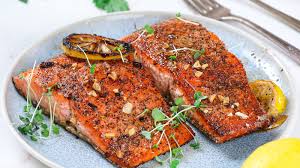Salmon, those iconic fish with their distinctive pink flesh and silvery scales, have captivated human imagination for centuries. These magnificent creatures are known for their remarkable life cycles, their culinary importance, and their ecological significance.
Salmon Biology and Life Cycle
Salmon belong to the family Salmonidae, which also includes trout and char. They are anadromous fish, meaning they are born in freshwater, migrate to the ocean to mature, and then return to freshwater to spawn. This incredible journey, known as spawning migration, is one of the most remarkable feats in the animal kingdom.
Salmon have a complex life cycle. They hatch from eggs laid in freshwater streams or rivers, and the young fish, known as smolts, spend their early years feeding on insects and other aquatic invertebrates. Once they reach a certain size, smolts migrate to the ocean, where they spend several years feeding on plankton and small fish.
When salmon reach maturity, they embark on their incredible journey back to their natal rivers to spawn. This migration can be thousands of miles long, often against strong currents and waterfalls. Upon reaching their spawning grounds, salmon build nests, known as redds, where they lay their eggs. After spawning, most salmon die, completing their life cycle.
Salmon Diversity
There are several species of salmon, each with its own unique characteristics:
- Atlantic salmon: This species is found in the North Atlantic Ocean and is known for its large size and distinctive pink flesh.
- Pacific salmon: There are five species of Pacific salmon, including sockeye, coho, chinook, chum, and pink salmon. Each species has its own unique appearance and migration patterns.
- Arctic char: Arctic char are closely related to salmon and are found in cold, freshwater lakes and rivers.
Salmon in Human Culture
Salmon have been a valuable food source for humans for thousands of years. Their rich, fatty flesh is packed with nutrients, including omega-3 fatty acids, protein, and vitamins. Salmon is a popular ingredient in many cuisines around the world, enjoyed in dishes such as smoked salmon, grilled salmon, and salmon sushi.
In addition to their culinary importance, salmon have cultural significance in many societies. They are often associated with strength, perseverance, and the cycle of life.
Salmon Conservation
Salmon populations have faced significant challenges in recent decades due to habitat loss, pollution, overfishing, and climate change. Conservation efforts are focused on protecting salmon habitats, managing fisheries sustainably, and restoring degraded ecosystems.
By understanding the biology, ecology, and cultural significance of salmon, we can appreciate their importance and support efforts to protect these magnificent creatures for future generations.
